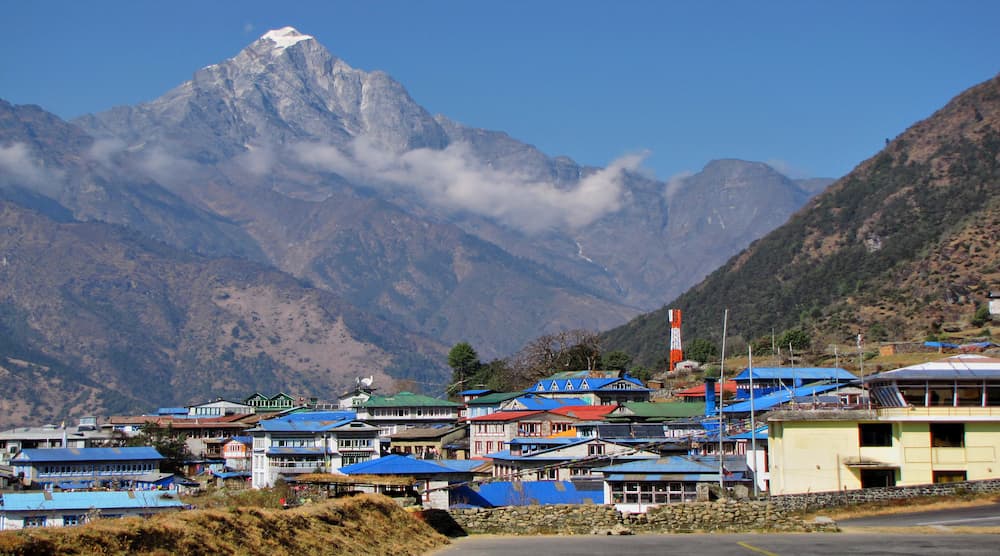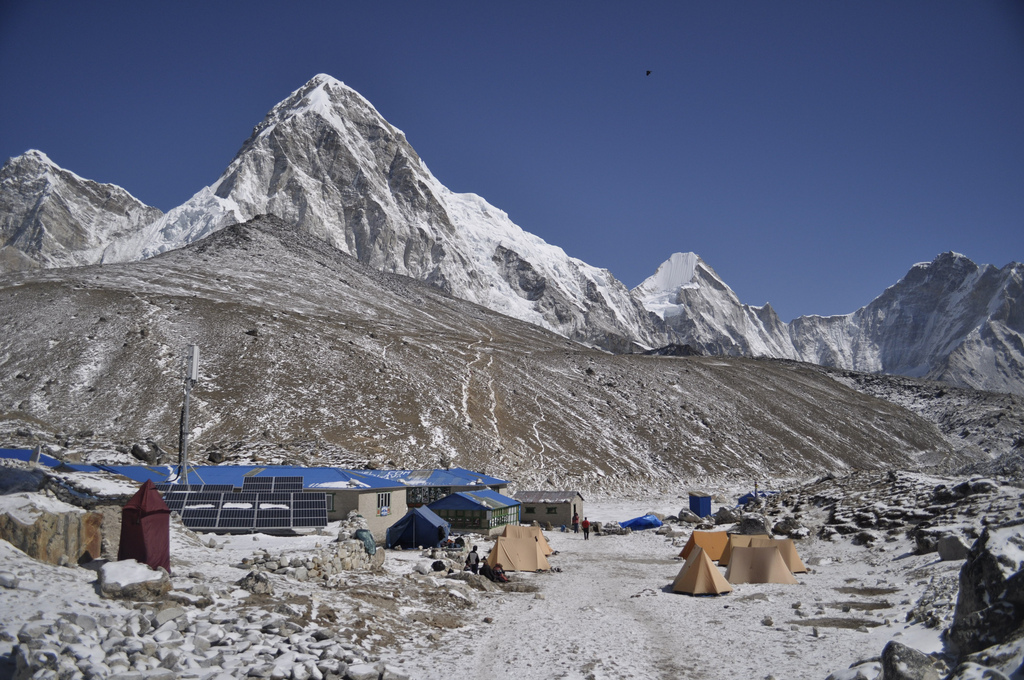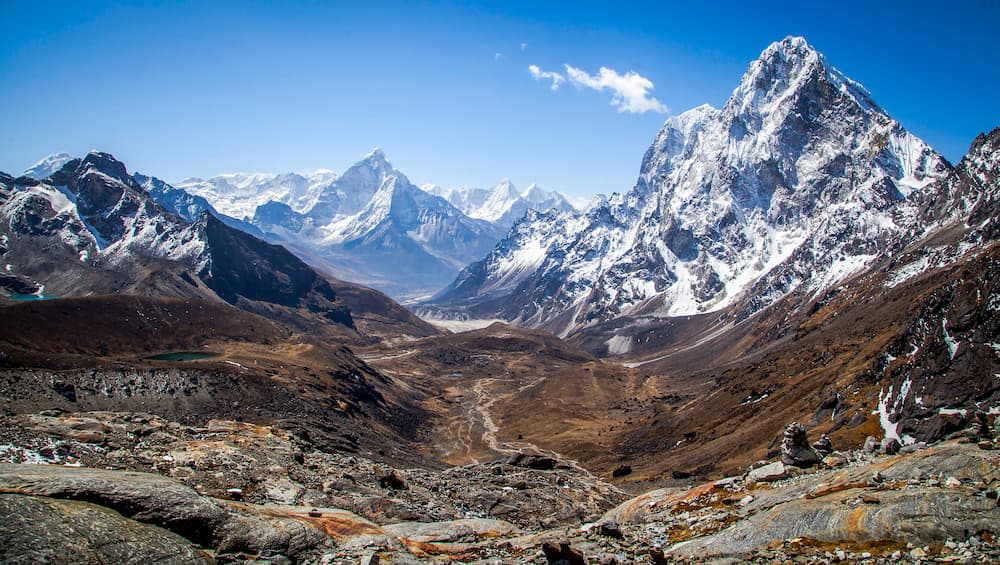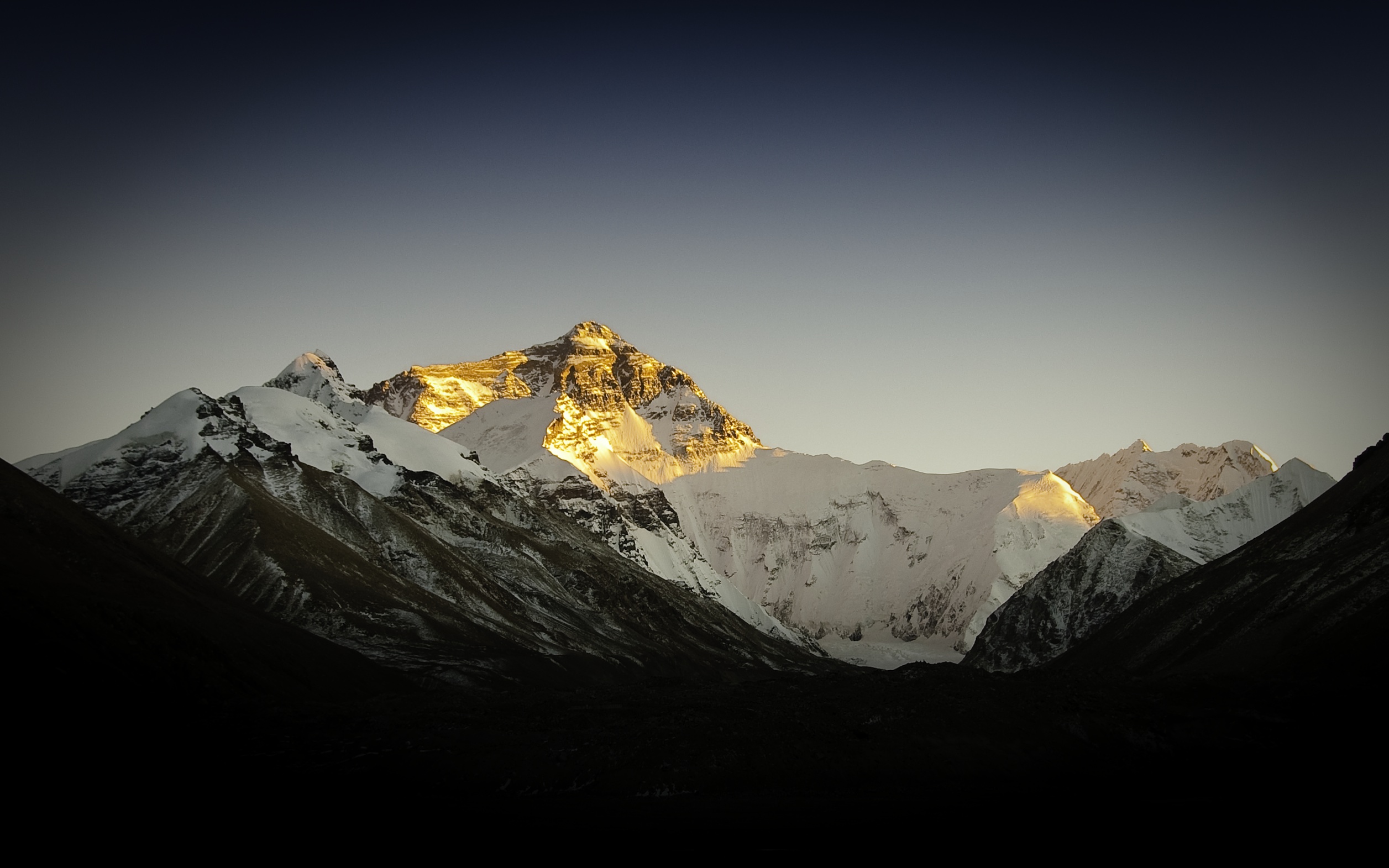Notable aspects of Everest Base Camp Hike
- Revel in the surreal scenery of green hills, soothing rivers and glimpses of Mountains as you take in a scenic 30-minute flight to Lukla from Kathmandu.
- Explore the most famous markets in Everest Region- Namche Bazaar
- Discover the Sherpa museum and get to know about their cultures, lifestyles and traditions.
- Traverse through the lush forest adorned with blooming rhododendrons, charming villages, cascading waterfalls, suspension bridges and, gleaming rivers.
- Visit one of the ancient Tengboche Monastery in the Khumbu Region.
- Feel the thrill while setting foot on the base camp of the World’s tallest peak Mt. Everest (8848m).
- Marvel at the incredible closure sights of gigantic Mount Everest.
- Surround yourself with majestic peaks like Mt. Lhotse, Mt. Nuptse, Mt. Cho oyu Mt. Amadablam etc.
- Experience the warm hospitality of Sherpa’s people.
- Hop on a scenic as well as adventurous Heli flight and amaze with the bird’s eye view of mountains and the region - a heavenly place.
- A once-in-a-lifetime journey
The Everest Base Camp Elevation

Everest Base Camp Trek is a popular destination for trekkers and mountaineers around the globe who aim to conquer the highest peak, Mt. Everest.Everest Base Camp altitudes play a significant role in the trek, making it an exhilarating journey in your life with a great sense of accomplishment. The higher you attain the views are just worth watching will be incredibly the journey of a lifetime. Ultimately, the Everest trek takes you up to the base camp situated at an elevation of (5364m/17599ft), which is quite high for beginners but with adequate preparation, the trek can be completed.
Later, the Everest Trekking stops you at a noteworthy destination and the highly elevated destination Kalapathar at an altitude of (5644m) rising above sea level. One of the exciting and challenging treks will take your breath away with some difficulties involved along the trail. Kalapathar is the best destination to revel in the surreal beauty of the Everest region surrounded by the majestic highest snowcapped mountain and worth whiling Khumbu glacier. The exigent nooks and corners of the Everest trekking routes and the fascinating elevation make it more attractive to utmost adventure lovers.
While it may appear intimidating at first, with the proper physical training and a rigid understanding of Everest Base Camp's elevation and altitude changes, anyone can be ready to traverse the impressive paths of EBC. Furthermore, besides trekking, you have the option to experience Everest in a possible way such as the Everest Base Camp Helicopter Tour, reaching heights of up to an elevation of 5644 meters.
The main point about the Everest base Camp heights is one of the difficult parts of the trek where thousands of people tackled and returned with the best memory of life. The trekkers have to experience cold weather and high-altitude challenges where there are countless hurdles encountered throughout the journey. Everest Base Camp Trek is one of the high-altitude treks which may be difficult to adjust in the highly elevated terrain so, be cautious about altitude sickness. Altitude sickness is a common risk as you are already in a high region where the air is thin and no vegetation. So be cautious about the symptoms and precautions for altitude sickness if you’re planning to trek Everest Base Camp or such high-altitude treks like Annapurna Base Camp Trek, Manaslu Circuit Trek, Mount Kailash Tour and Mardi Himal Trek.
Everest Base Camp cost
The main important concern about Everest Trek is cost, however, it may vary based on several factors: as the total trek duration, the route travellers choose for the trek, the EBC luxury trek and whether you're planning for a solo trek or with a guide and porter. Undoubtedly, the treks in Nepal are more budget-friendly and cost-effective than other treks around the world. If you’re planning for Everest Base Camp Trek rather than Everest Climbing then the cost will be cheaper and effective. Regarding the expense of the Everest Base Camp Trek, there isn't a set rate. The Everest cost typically ranges from $1500 to $4000, contingent upon factors like the chosen route, the outfitter, and the services likewise mentioned above.
If you opt for the Everest luxury Lodge Trekking, it costs $2200 to $3000 per person and the Everest helicopter Tour costs you from $ 4500 to 6500 per group. And Everest Helicopter Tour costs you $1600 per person if you are travelling solo without any group. For the standard EBC Trek package an average 12 – 15-day trek costs you $ 1500 to 1800 per person. The cost generally includes permits, round-trip flights from Kathmandu to Lukla, accommodation, and meals. However, the costs don’t include visa fees, trekking, and travel insurance. Here's a breakdown of some possible expenses:
Permit costs: To enter Sagarmatha National Park- the Everest region, you’ll require three permits: Sagarmatha Entry Permits, Khumbu Rural Municipality permits and TIMS (Trekker’s Information Management System). These permits can range from around $40 to $50 per person.
Accommodation costs: The Standard EBC Trekking package provides you the basic accommodation services in Teahouse or Lodges with basic amenities. Cost may differ on the services you use during your stay but approximately, the cost ranges between $10-$15 per night. If you choose a luxury trekking package, it provides a deluxe room including a bathroom hot shower and necessary services. the cost ranges between $100-$115 per night. Accommodation expenses can add up throughout the trek.
Guide and Porter cost: If you’re planning for any treks in Nepal, the Solo trek is restricted in Nepal today’s scenario. So a guide is compulsory for the Everest trek and a porter is your choice. Hiring a guide and/or porter can magnify your experience and relieve the physical strain. Guide cost may range from $18 to $25 per day, while porter cost may be around $15 to $20 per day, plus tips.
Foods and Drinks Costs: Generally, the teahouse offers three times meals a day according to your taste. It also depends on what you are eating can’t exactly set prices for foods and drinks. But in approximate measure, the costs of food and drink range between $30 to $35 per day, which is a reasonable price only found in Nepal.
Equipment Rent Costs: If you’re confused about the gear and equipment, there’s a possibility to rent in Kathmandu, Nepal. So, the cost will depend upon the gear items you rent. You may need to rent items like sleeping bags, trekking poles, down jackets etc. Normally, the costs will be from $1 to $5 per item per day approximately, not a fixed price.
Miscellaneous Expenses: It depends upon the travellers if you buy some snacks, and souvenirs, and demand hot showers (if available), and unforeseen expenses.
Note: Costs can be higher if you opt for luxury accommodations or if you encounter unexpected expenses. It's always a good idea to budget a little extra for occurrence.

Mount Everest Base Camp Weather
Everest Base Camp is one of the top destinations in the world situated at an elevation of 5364 meters and offers majestic surrounding views of nature. But at the same, Everest Base Camp weather plays a vital role in providing an amazing experience or not. The conditions at Everest Base Camp can fluctuate significantly throughout the year. Thus, having an extorting of the monthly weather patterns and temperature changes can enhance your trekking adventure.
This guide will help you to figure out which seasons are ideal and the weather during that time. If you want to experience the thrilling journey with the astounding Himalayan sights then, choose the best time according to your preferences. From the fresh sunny days of autumn to the snow-filled paths of winter, then onto the blossoming beauty of flowers in spring and the luxuriant landscapes of monsoon, each month inculcate this journey with its noticeable aspect. Let's explore this subtlety further to abetment you in expertly planning your trek.
Spring Season
One of the best times to do the Everest Base Camp Trek is in the Spring season. The trail is filled with blooming rhododendrons, pine and oak flowers adding vibrancy to the Everest trekking trail. Generally, the weather conditions are just amazing presenting clear skies and mild temperatures. The walk will be smooth and easier alongside getting this chance to witness the stunning Himalayan views. During the spring seasons, the daytime temperatures range from 5°C to 15°C (41°F to 59°F), while nighttime temperatures can drop up to -10°C (14°F). Preparation is a must in every season including warm clothes and appropriate gear.
Autumn season
This Autumn season is another ideal time to embark on a journey of Everest Trek. This time offers stable weather conditions, clear skies, and spectacular views of the mountains which enhances your overall experience. If you’re planning to trek in the Everest region, make sure to choose the right time to begin. Get into a smooth trail without any hurdles of unpredictable weather but there would be difficulty passing some point in the trek. Observe the clear vistas of the top mountains and capture every moment to cherish for a lifetime. However, the temperature in the time ranges from 10°C to 15°C (50°F to 59°F), and nighttime temperatures drop up to -5°C (23°F).
Summer/ Monsoon season
The rainy season brings heavy rainfall and cloudy skies, making the Everest trekking trail muddy and slippery. During this season, the difficulty level will increase because of the trail conditions but also it is possible to do the trek with proper gear and equipment. Mostly, we don’t prefer to make plans during this season. However, daytime temperatures can reach 10°C to 17°C (50°F to 63°F), while nighttime temperatures reach around 2°C to 8°C (36°F to 46°F).
Winter Seasons
Winter season is also the best time to trek Everest Base Campwhich offers an incredible view of snowcapped mountains and the surreal view of Khumbu glaciers. But the main difficulty during the seasons is that the weather conditions in high altitude regions are cold and also have a chance of heavy snowfall. The trail will be blocked somewhere due to heavy rainfall. If you have the power to endure the chilling cold temperature then it would be the best time to get a thrilling experience for a long time. Fewer trekkers venture during this period due to the harsh conditions, though the trails are quieter and the scenery can be stunning with snow-covered peaks. During the winter season, daytime temperatures are around -5°C to 5°C (23°F to 41°F), while nighttime temperatures can decline to -20°C (-4°F). With proper planning and wearing warm clothes, the trek can be accomplished by numerous adventurers.

Mount Everest Base Camp Trek Facts
Mt. Everest (8848m) – the world’s highest mountain was first discovered by Radhanath Sikdar (Asian mathematician and surveyor from Bengal). Since that time, conquering Mount Everest has become the bucket list dream of millions of adventure seekers who were previously negligent of its presence.
More than a century later, on May 29, 1953, Tenzing Norgay Sherpa, from Nepal, and Edmund Hillary from New Zealand achieved an exceptional accomplishment: they were the first legends to succeed at the summit of Mount Everest. From then, these mythical climbers make the classic route for future travellers, persuading others to experience the peak of the world. With news of Everest's conquering unrolling, the Everest Odyssey captured the passion of the world, becoming a commotion worldwide.
In today’s scenario, trekking to Everest Base Camp or Everest Mountain climbing, many people from every corner of the globe desire once to be on the roof of the world. Somehow, explorers make their way mostly to the base camp to witness the top Himal but actually, Mt. Everest wasn't visible from top to bottom from Everest Base camp.
Between the recognition of viewpoints, Kala Pathar appeared as a noteworthy location, offering a stunning and incredible view of Mount Everest from base to summit. Translating from English "Black Stone,” to “Kala Patthar “in Nepali earns its name from the large black stones that must be wandered on the ascent to reach it. From there, the views are worth whiling which takes every traveler's breath away for some time. Everest Base Camp Hike is truly a life-changing experience!!
Certainly! Here are also some interesting facts about the Mount Everest Base Camp trek.
Locations: Everest Base Camp Trek is located in Sagarmatha National Park in the Solu Khumbu district of Nepal.
Maximum Altitude: The Everest trek takes you over the height of 5000m above sea level. Everest Base Camp is settled at an altitude of 5364 meters which is a high-altitude trek that leads to some problems like altitude sickness.
Trek Duration: Everest Trek typically takes 12-14 days to complete and return to Kathmandu. But if you prefer more acclimatization day during the trek, it may extend. It may vary depending on the routes and traveller’s interest.
Accommodations: The trek offers comfortable teahouses and lodges to rest after an exhausting walk of 6-7 hours.
Sherpa Culture: The Everest region is especially renowned for the Sherpa people. Experience the warm hospitality of Sherpa people during the trek and it will be an amazing time with them.
Best seasons: As Everest Trek is in high altitude region, the trek should commence in the best season so Spring and Autumn are considered the ideal times.
Trek Difficulty: The Everest Trek is moderately difficult in Nepal, however, it is one of the top destinations over the globe.
Foods: During the Everest Trekking, three meals a day will be served such as Breakfast, Lunch and Dinner. According to travellers’ preferences, veg and non-veg foods are served.

Everest Base Camp Trek Itinerary
Day 1: Arrival in Kathmandu
Day 2: Kathmandu – Lukla [2,840m] by flight, 35 mins – Trek from Lukla to Phakding, 3-4 hrs trek
Day 3: Trek from Phakding – Namche Bazaar 6-8 hrs
Day 4: Namche Bazaar: Acclimatization and Exploration Day
Day 5: Trek from Namche Bazaar – Tengboche 5-6 hrs
Day 6: Trek from Tengboche - Dingboche 5-6 hrs
Day 7: Dingboche: Acclimatization and Exploration Day
Day 8: Trek from Dingboche – Lobuche 4-5 hrs
Day 9: Trek from Lobuche – Gorakshep [5,160m] – Everest Base Camp [5,364m] – Gorakshep, 7-8 hrs
Day 10: Trek from Gorakshep – Kalapatthar [5,545m] – Pheriche [4,280m] 7-8 hrs
Day 11: Trek from Pheriche – Namche Bazaar 8-9 hrs
Day 12: Trek from Namche Bazaar – Lukla 7-8 hrs
Day 13: Flight from Lukla – Kathmandu 35 min flight.
Day 14: Departure
Everest Base Camp Hike Difficulty
While previous trekking experience is not a requisite for our Everest Trek package, this is a moderately difficult trekking trail which takes travellers up to the maximum elevation of 5,364 meters. Walking for 6-7 hours each day, and the trekking trail ascends and descends as it winds through countless side valleys and high-altitude mountain passes, the trek is ultimately difficult in Nepal. Unless it is not an impossible one.
For these reasons, you should be healthy and physically fit before starting this trek. Nevertheless, this trek has also included days for acclimatization; your past trekking or hiking experience might be beneficial. Walking, running, and other forms of cardiovascular exercise are the activities you should engage in before the journey. This trek is achievable if you are focused on physical and mental fitness especially. Having a positive mindset will also help to dictate regardless to complete this trek.
Lastly, this 14-day Everest base camp trekking is attainable by any age group who can walk around 6-7 hours daily.
Related Blogs (s)
Best time to Trek Everest Base Camp
Everest Base Camp Trek Distance
Everest Base Camp Trek Difficulty A Comprehensive Guide
7 Best Everest Base Camp Trekking Packages in Nepal
Experience a Short Trek in the Everest Region
Foods and Accommodations during EBC Trek
Everest Base Camp Altitude Sickness
Everest Base Camp Trek in December
Everest Base Camp Helicopter Tour
Everest Base Camp Trek Fitness Requirements
Experience the Everest Luxury Lodge Trek
Gokyo Chola Pass with EBC trek
Everest Base Camp Trek Difficulties

Everest Base Camp Altitude Sickness
EBC trek is one of the highest treks that takes you to higher elevations, reaching over 5,000 meters (16,400 feet) above sea level. Altitude sickness is the main risk while you are trekking in high-altitude regions. It may occur to anyone who is not acclimatized properly, leading to symptoms like headache, nausea, and fatigue. Acclimatization, maintaining hydration level, and proper diet are crucial to prevent altitude sickness. Here are the tips that will help with altitude sickness during Everest Base Camp Trek.
- Make sure to consult with your doctor before embarking on a Manaslu trek.
- Eat a healthy diet and proper nutritious food during the trek.
- Pack your bag with warm clothes, comfortable shoes and essential trekking gear.
- Carry a first aid kit and medicine that you have been taking regularly.
- Ascend slowly and take some breaks in between.
- Climb only with an experienced and professional guide.
- Stay hydrated all the time by increasing your fluid intake.
- Avoid consuming alcohol and cigarettes at high region.
- Listen to your body and if feels like symptoms occur inform the guide or team member right away.
Note: Follow the mentioned tips and make your trip easy and stunning.
Everest Base Camp Hike Fitness Requirements
Hiking to Everest Base Camp requires a certain level of fitness throughout the journey as the trial offers multiple hurdles in wilderness steep and rugged terrain. To attain the journey successfully, trekkers need to have stamina power and endurance power to tackle the continuous walk of 6-7 hours on an everyday trail in high-altitude terrain filled with rocks. So, make sure to know about the fitness requirements for the Everest base camp.
Normally, the trek requires both Physical Fitness and Mental Fitness to overcome the challenges along. Physical fitness is absolutely an important factor but Mental Flexibility is equally should be a major concern as it helps to motivate yourself to handle the hurdles during the trek. Engage in some activities like Cardio Vascular – (hiking, running, cycling, or swimming) and, Strength Training – (squats, lunges, deadlifts, and core exercises). With some exercises, the trek will be easy and enjoyable.
Packing Essentials for Everest Base Camp Hike
Many travellers are confused about what to pack for Everest Base Camp Trek. it depends upon the season or time you are embarking on. Make sure to bring the layers to be warm and comfortable throughout the EBC hike. Due to unforeseeable weather conditions, prepare yourself with warm & comfortable clothing and essential gear, making the trek convenient and enhancing the EBC trekking experience. Look out for the listing of proper packing gear while hiking to Everest Base Camp ensuring have a safe and enjoyable journey.

Clothing
Body Wear
- Moisture-wicking long-sleeve t-shirts (2)
- Moisture-wicking short-sleeve t-shirt (1)
- Heavy fleece or down jacket
- Waterproof jacket with hood
- Windbreaker
- Raincoat
- Fleece pants
- Trekking pants (2)
- Hiking shorts (1)
- Waterproof pants
- Hiking socks (10)
- Warm thermal socks (1)
- Long underwear (2)
- Underwear (10)
Footwear
- Hiking boots with ankle support
- Camp shoes or tennis shoes
Hand Wear
- Light inner gloves/glove liners
- Insulated wool or down mittens/gloves
Headwear
- Sunglasses
- Broad-brimmed hat
- Neck gaiter or bandana (for sun protection)
- Wool hat or balaclava
- Gaiters (required in Dec-Feb)
Trekking Gear
- Duffle bag for carrying gear via porters (provided by Eternal Himalaya if you join with us)
- 40L Daypack for carrying personal items
- Waterproof cover for daypack
- Snacks (combine protein & carbs for well-balanced energy)
- Thermos (for hot beverages)
- Sleeping bag rated to -18°C/ 0°F
- Trekking poles
- Headlamp with extra batteries
- Lightweight water filter or water purification tablets
- Drybags in several sizes
- Stuff sacks for dirty clothes/shoes
- Camera with extra batteries and memory cards
- Small lock(s) for duffle bag and daypack
- Diamox (for altitude sickness)
Toiletries
- Toilet Paper
- Personal prescriptions
- Soap
- Toothbrush/toothpaste
- Razor (as needed)
- Shampoo
- Feminine hygiene products (as needed)
Personal Care items
- Sunscreen
- Lip balm with sunscreen
- Deodorant
- Wet wipes
- Hand sanitiser
- Hairbrush
- Hair ties
- Face lotion
Extra Supplies
- Portable solar charger/power bank
- Book
- Journal/pen
- Playing cards
Essential Travel Documents for Everest Base Camp Hike
.jpg)
The most important for the Everest Base Camp hike is travel documents. Requires for obtaining permits, acquiring a Nepal Visa and much further processing. Here’s a document list needed for Everest Base Camp Trek:
- Passport with a valid date of 6 months.
- Passport copies
- Nepal Visa (obtain Nepal visa—bring $30 (15 Days) or $50 (30 Days) for Visa Application
- Nepali Cash (preparing for some areas)
- 3-4 Passport-sized photos if needed for permits
- Travel Insurance
Suggestions for Everest Hikers trekkers
- Dress in layers to adapt to the changing temperatures.
- Bring essential items such as thermal clothing, a down jacket, waterproof gear, and good-quality trekking boots.
- Acclimatization is vital to avoid altitude sickness. Take time to adjust to the elevation and stay hydrated.
- Monitor weather forecasts and be flexible with your schedule to accommodate sudden weather changes.
- Familiarize yourself with the emergency evacuation procedures in the region in case medical assistance is needed urgently.
- Listen to your body and pay attention to the altitude sickness symptoms.
- Apply high SPF sunscreen, wear sunglasses and a brimmed hat.
- Respect Local customs, traditions and cultures.
- If you want to do a solo Everest base camp trek, you should hire a guide or join a trekking group.
- A good level of fitness is needed for the trek, so it's important to start training early.
- Getting travel and medical insurance is a must for any trek in the Himalayas.
- Carry trekking permits and necessary documentation.
Conclusion
Completing the Everest Base Camp hike is an exceptional achievement, epitomizing physical endurance, mental resilience, and a deep appreciation for the natural world. This challenging trek offers more than just stunning views of the Himalayas, it provides a life-changing journey that connects trekkers with the rich culture of the Sherpa people and the spiritual aura of the region.
The sense of accomplishment upon reaching the base camp of the world's tallest mountain is unique, making all the attempts and persistence worthwhile. As hikers descend, they return with them unforgettable memories, a deep respect for nature's wonders and culture’s wonders, and often, a renewed perspective on personal goals and desires. The Everest Base Camp hike is not just an adventure; it's a witness to the human spirit and willpower.
So, without any further delay make your plan to Everest Base Camp with the Eternal Himalaya Team will provide an incredible experience in the mountainous region for a lifetime! Contact us for more queries about treks in Nepal.Notable aspects of Everest Base Camp Hike


.jpg)






.jpg)
